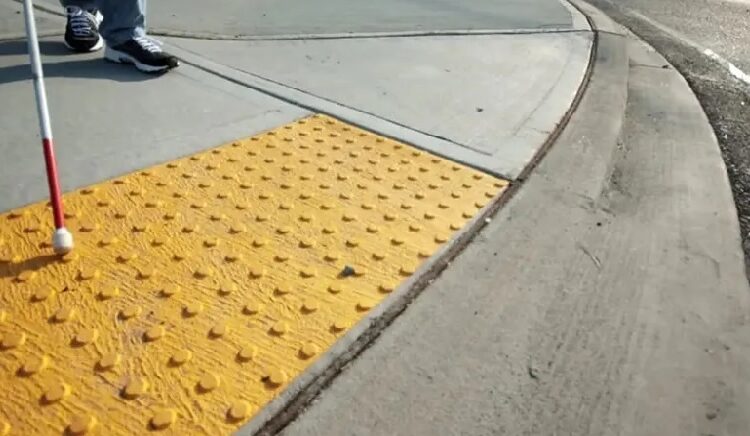Tactile pavers, also known as tactile paving or truncated domes, play a crucial role in enhancing the safety and mobility of individuals with visual impairments, particularly the blind. These textured surfaces are designed to be detectable by touch and can be found in various environments, such as sidewalks, pedestrian crossings, train platforms, and other public spaces.
Here are reasons why tactile pavers are important for the blind:
Navigation and orientation: Tactile pavers provide tactile cues that help individuals with visual impairments navigate and orient themselves in unfamiliar environments. The distinct texture underfoot signals changes in the environment, such as the presence of an intersection, stairs, or a platform edge.
Bus Stop identification: Tactile paving is employed at bus stops to assist in identifying the waiting area. This helps blind individuals locate the appropriate place to stand while waiting for a bus, enhancing their independence in public transportation.
Warning of hazards: The raised patterns of tactile pavers serve as a warning of potential hazards, such as the edge of a platform or the beginning of a staircase. This tactile feedback allows individuals to adjust their movement and avoid accidents.
Pedestrian crossings: Tactile pavers are commonly used at pedestrian crossings to indicate the transition from a sidewalk to a crosswalk. This helps blind individuals locate the appropriate place to wait and cross streets safely.
Public transportation: In transportation hubs like bus stops and train platforms, tactile pavers help blind individuals identify waiting areas and boarding points. They also indicate the presence of platform edges, reducing the risk of accidental falls.
Consistency and standardization: Tactile paving follows specific patterns and standards, providing a consistent and recognizable means of wayfinding. This consistency is essential for individuals with visual impairments to navigate different environments confidently.
Universal design: Tactile paving promotes universal design principles by making public spaces accessible to people with various abilities. This inclusivity benefits individuals with visual impairments and those with other mobility challenges.
Pedestrian plazas and public spaces: Tactile pavers are employed in pedestrian plazas and open spaces, enabling blind individuals to explore and enjoy these areas safely. The tactile cues assist in detecting pathways, seating areas, and other features of the public space.
Independence and confidence: By providing clear and consistent tactile cues, these pavers empower individuals with visual impairments to travel independently, boosting their confidence and reducing reliance on assistance from others.
Compliance with accessibility regulations: Many countries have established accessibility standards that mandate the inclusion of tactile paving in public spaces. Compliance with these regulations ensures that infrastructure is designed to accommodate the needs of individuals with visual impairments.
Emergency evacuation: In emergencies, tactile pavers assist individuals with visual impairments in quickly and safely evacuating buildings or public spaces. The distinct texture helps guide them toward exits and evacuation routes.
Social Inclusion: Tactile pavers contribute to promoting social inclusion by enabling individuals with visual impairments to participate more fully in community activities. Accessible infrastructure enhances their ability to engage with the urban environment.
Wrapping up
Tactile pavers are essential in creating an inclusive and accessible environment for individuals with visual impairments. By providing tactile cues and warnings, these textured surfaces contribute to the safety, independence, and overall well-being of the blind community.





